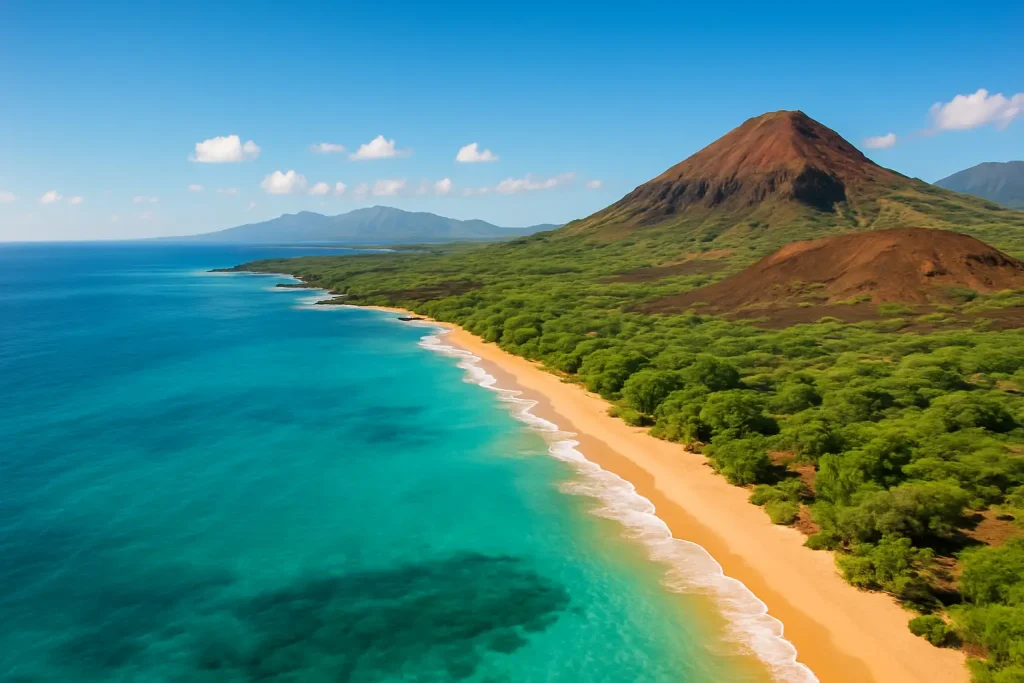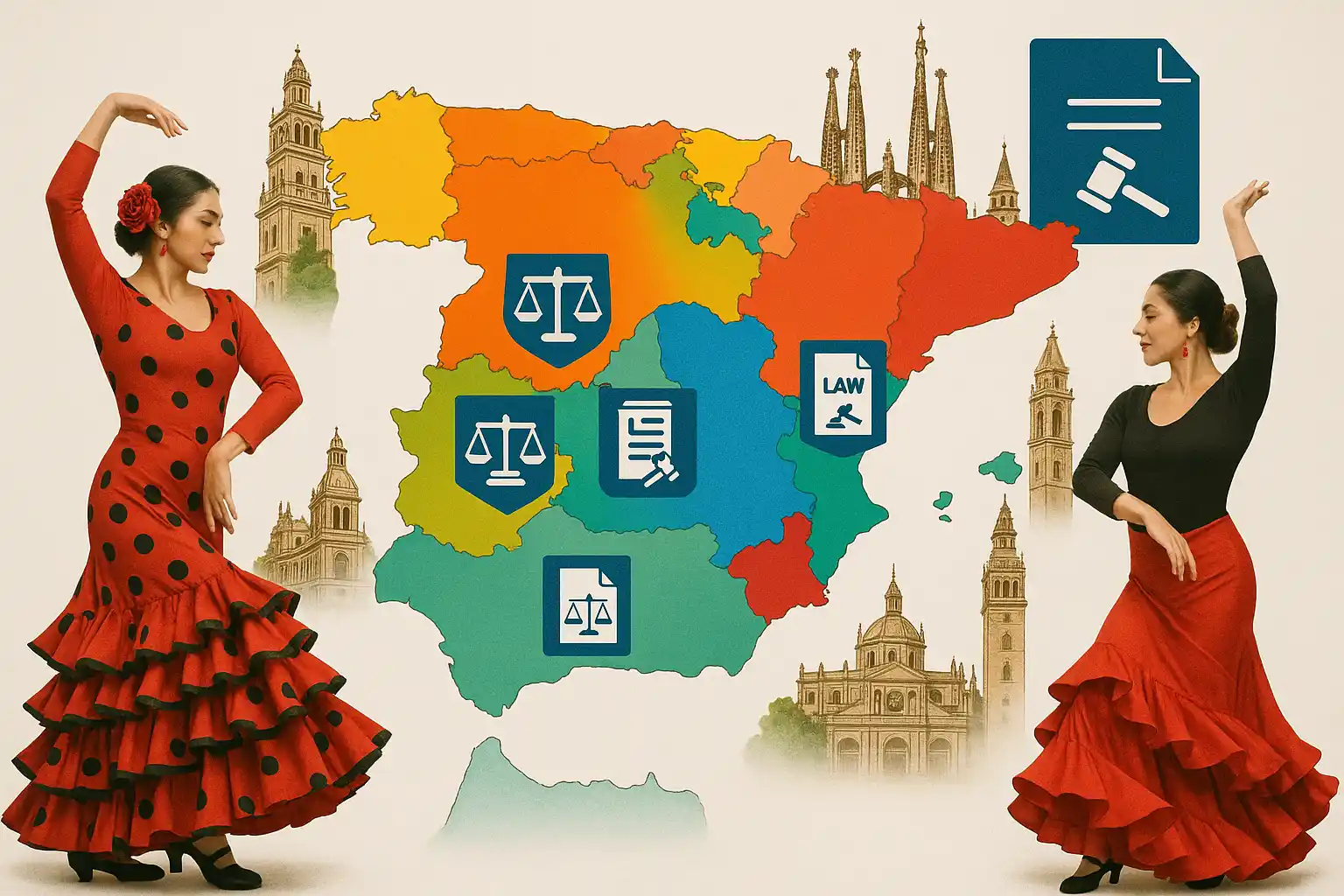Introducing Spain means discovering a rich tapestry of landscapes, cultures, and histories. Among its most captivating features are the Spain islands, which offer a unique blend of natural beauty and vibrant traditions. The Spanish archipelagos—scattered jewels across the Mediterranean and Atlantic—are often celebrated for their popular destinations like Ibiza and Tenerife. Yet, beyond these well-trodden paths lie hidden gems waiting to be explored.
Imagine stepping off the beaten track to find tranquil beaches, ancient forests, volcanic landscapes, and charming villages untouched by mass tourism. Exploring these lesser-known island destinations reveals a side of Spain that is authentic, serene, and deeply rewarding. This guide invites you to embark on a journey through Spain’s diverse islands, uncovering their secrets and experiencing travel in Spain like never before.
However, it’s essential to understand certain regulations that might affect your travel plans. For instance, if you’re a UK citizen planning to stay in Spain for an extended period, you should familiarize yourself with Spain’s 90-day rule. This rule outlines important details regarding travel and residency post-Brexit.
Moreover, if your journey involves working in Spain, it’s crucial to be aware of the recent changes in Spain’s minimum salary which could impact immigration policies and work permit eligibility. Understanding these factors will help ensure a smooth and enjoyable experience while exploring the beautiful islands of Spain.
Overview of Spain’s Island Groups
Spain is home to a diverse range of islands that offer unique experiences for travelers. The country’s islands are divided into two main archipelagos—the Balearic Islands in the Mediterranean and the Canary Islands off the coast of Africa. In addition to these major groups, there are smaller scattered islands along the mainland that also contribute to Spain’s rich natural diversity.
1. Balearic Islands
Situated in the Mediterranean Sea, the Balearic Islands include popular destinations such as Mallorca, Menorca, Ibiza, and Formentera. Each island has its own distinct charm:
- Mallorca: Known for its panoramic landscapes encompassing beaches, mountains, and historic villages.
- Menorca: Offers a more laid-back atmosphere with beautiful beaches and prehistoric sites.
- Ibiza: Famous for its vibrant nightlife but also has serene beaches and family-friendly areas beyond its party scene.
- Formentera: A small island known for its stunning beaches and crystal-clear waters.
2. Canary Islands
Located off the African coast, the Canary Islands boast volcanic landscapes and natural wonders. Some highlights include:
- El Hierro: Known for its sustainable living initiatives and renewable energy efforts.
- La Gomera: Offers lush laurel forests perfect for hiking enthusiasts.
- La Palma: Stands out for its greenery and diverse hiking routes, including trails passing volcanic craters.
- Lanzarote: Fascinates visitors with its unique volcanic rock formations and lava fields, with attractions like Timanfaya National Park showcasing otherworldly scenery.
- La Graciosa: Provides a car-free paradise for those seeking peace and tranquility amid stunning landscapes.
These Spanish island groups play a significant role in attracting tourists seeking varied experiences ranging from relaxation on pristine beaches to exploration of diverse natural environments. For U.S. citizens planning a visit, it’s important to note that they don’t need a visa for short stays, but must meet specific entry requirements.
Moreover, Spain’s unique cultural landscape is filled with weird laws that might surprise newcomers. Those considering a longer stay or moving to Spain from the UK should familiarize themselves with the necessary residency procedures post-Brexit.
In addition to these practical considerations, exploring Spain also unveils a treasure trove of cool facts about its rich culture, history, festivals, cuisine, sports, and diverse landscapes.
The Balearic Islands: Mediterranean Treasures
Mallorca: The Largest Balearic Island
Mallorca, the largest of the Balearic Islands, is known for its stunning panoramic landscapes that include beautiful beaches, majestic mountains, and charming historic villages.
Explore the Natural Wonders
- Relax on the pristine beaches of Mallorca, such as Playa de Palma and Cala Agulla.
- Embark on a hiking adventure in the Serra de Tramuntana mountain range, a UNESCO World Heritage site.
Immerse Yourself in History and Culture
- Discover the rich history of Mallorca by visiting its ancient towns like Alcúdia and Pollensa.
- Experience the local culture by exploring traditional markets and trying authentic Mallorcan cuisine.
2. Menorca: Family-Friendly Coastal Escape
Menorca island offers a serene contrast to the lively atmosphere found on Mallorca island and Ibiza Spain islands. Known for its relaxed pace, Menorca is an ideal summer destination Menorca for families seeking calm and safety. The island’s charm lies in its unspoiled natural beauty and tranquil coastal environment.
Why Families Love Menorca
- Gentle Beaches: The family-friendly beaches in Menorca have calm waters and soft sands, making them perfect for children and those looking to relax away from the crowds typically found in larger Balearic destinations.
- Sheltered Coves: The coastline has many sheltered coves where waves are mild, making it easier for families to enjoy water activities like swimming and snorkeling.
- Peaceful Ambiance: Unlike the busy scenes on Mallorca beaches or the party reputation of Ibiza, Menorca maintains a peaceful atmosphere that appeals to visitors wanting space to connect with nature and each other.
- Cultural Exploration: Inland, quiet villages provide insight into local culture with traditional architecture, quaint streets, and welcoming eateries serving fresh Mediterranean cuisine.
Embracing Slow Travel
This island’s relaxed atmosphere encourages slow travel—inviting families to discover hidden gems at their own pace. Menorca island in Spain balances natural splendor with practical comforts, making it a unique addition to the Balearics as a popular Mediterranean destination with unique characters for each island.
3. Ibiza: Beyond the Party Scene
Ibiza is often synonymous with vibrant nightlife and electrifying parties, attracting party enthusiasts from all over the world. However, there’s more to this Spanish island than just its legendary clubs and music festivals.
A Diverse Destination for Every Traveler
Whether you’re a nature lover, a family seeking adventure, or someone looking to unwind by the sea, Ibiza has something for everyone:
- Tranquil Beaches: While the island is famous for its lively beach clubs, there are also secluded beaches where you can escape the crowds and enjoy peaceful moments. Cala Comte and Cala d’Hort are perfect spots for sunbathing and swimming in crystal-clear waters.
- Family-Friendly Areas: Ibiza isn’t just about nightlife; it’s also a great destination for families. Places like Santa Eulalia offer kid-friendly activities, water sports, and family-oriented resorts that cater to all ages.
- Outdoor Adventures: If you’re an outdoor enthusiast, you’ll find plenty of opportunities for hiking, cycling, and exploring nature on the island. Discover hidden coves, scenic viewpoints, and picturesque landscapes away from the bustling tourist spots.
Exploring Ibiza’s Unique Charms
In addition to its stunning beaches and diverse activities, Ibiza boasts unique attractions that add to its charm:
- Historic Villages: Take a break from the beach and explore charming villages like Dalt Vila (the old town of Ibiza) with its cobblestone streets, ancient walls, and fascinating history.
- Cultural Experiences: Immerse yourself in local culture by visiting art galleries, attending traditional festivals or events showcasing Ibizan heritage.
- Gastronomic Delights: Indulge your taste buds with delicious Mediterranean cuisine at local restaurants or beachside eateries serving fresh seafood dishes.
The Balearic Islands: A Mediterranean Gem
Ibiza is part of the Balearic Islands along with Mallorca and Menorca – popular Mediterranean destinations known for their unique character. Each island offers distinct experiences:
- Mallorca: Explore Mallorca’s stunning beaches surrounded by mountains, visit historic villages like Valldemossa or Sóller.
- Menorca: Experience Menorca’s laid-back atmosphere with pristine beaches such as Cala Macarella or Ciutadella’s charming old town.
For those looking to venture further afield from Ibiza itself but still want to explore nearby islands within reach:
- Formentera: Just a short ferry ride away lies Formentera – an idyllic paradise known for its untouched beauty featuring white sandy beaches & turquoise waters perfect for relaxation & water activities.
So whether you’re drawn here by its reputation as a party hub or seeking tranquility amidst natural wonders; remember that there’s much more waiting beyond what meets the eye!
4. Formentera: Pristine Beaches and Limited Access
Formentera, the smallest of the Balearic Islands, is a hidden gem known for its unspoiled beauty and exclusivity. Unlike its neighboring islands such as Mallorca, Menorca, and Ibiza, Formentera has limited accommodation options and transport restrictions, making it less accessible to mass tourism.
Unspoiled Beaches
The island is famous for its stunning beaches, with crystal-clear waters and soft white sand. The beaches here are often quieter compared to other popular destinations in Spain, offering a serene escape for those seeking tranquility and natural beauty.
Limited Accommodation
One of the reasons why Formentera remains exclusive is its limited accommodation options. There are only a few hotels and resorts on the island, which means that finding a place to stay can be challenging during peak seasons. This scarcity of accommodations helps preserve the island’s pristine environment and prevents overcrowding.
Transport Restrictions
Formentera has strict car rental restrictions in place, further contributing to its exclusivity. Only residents and authorized vehicles are allowed to drive on the island, which means that most visitors rely on bicycles or scooters for transportation. This eco-friendly approach not only reduces carbon emissions but also allows travelers to explore the island at a leisurely pace.
In summary, Formentera’s unspoiled beauty and exclusivity make it a unique destination in the Balearics. With its pristine beaches, limited accommodation options, and transport restrictions, the island offers an authentic experience away from the hustle and bustle of mainstream tourism.
El Hierro: Sustainable Island Living with Renewable Energy Initiatives
The Canary Islands form a fascinating archipelago known for their volcanic landscapes and diverse ecosystems. Among these islands, El Hierro stands out as a beacon of sustainable living and innovation.
Pioneering Renewable Energy Initiatives
El Hierro, the smallest and most remote of the Canary Islands, has made remarkable strides in renewable energy. Recognized as a UNESCO Biosphere Reserve, the island serves as a model for harnessing natural resources to power sustainable initiatives. Its commitment to clean energy reflects a harmonious coexistence between modernity and nature.
Untouched Natural Surroundings
The island’s small population allows for a more intimate connection with its unspoiled environment. Visitors can experience the raw beauty of El Hierro while appreciating the efforts towards ecological preservation. From lush forests to rugged coastlines, El Hierro offers a sanctuary for those seeking solace in nature.
El Hierro embodies the spirit of environmental consciousness and responsible tourism. By embracing renewable energy solutions and maintaining its pristine landscapes, this island sets an inspiring example for sustainable living in harmony with nature.
2. La Gomera: Hiking Through Lush Laurel Forests in Garajonay National Park
Garajonay National Park, located on the island of La Gomera, is a paradise for nature lovers and hiking enthusiasts. This UNESCO World Heritage site is home to ancient laurel forests, where visitors can immerse themselves in a magical world of towering trees draped in moss.
Explore the Enchanting Laurel Forests
The laurel forests of Garajonay National Park are a remnant of the subtropical forests that once covered much of Europe. These unique ecosystems are characterized by their dense vegetation, high humidity, and mild temperatures, making them ideal for a variety of plant and animal species.
As you hike through the park, you’ll have the opportunity to witness firsthand the incredible biodiversity that thrives in these ancient woodlands. Keep an eye out for endemic species such as the La Gomera lizard and various bird species like the blue chaffinch.
Discover Scenic Hiking Routes
Garajonay National Park offers a network of hiking trails that cater to all levels of fitness and experience. Here are some specific routes that are worth exploring:
- Los Roques Trail: This moderately challenging hike takes you through the heart of the laurel forest and leads to breathtaking viewpoints overlooking the island’s rugged coastline.
- El Cedro Trail: If you’re looking for a more leisurely walk, this trail follows a gentle route alongside the river and offers glimpses of hidden waterfalls tucked away in the greenery.
- Pico de Garajonay Summit Trail: For those seeking a thrilling adventure, this strenuous trek will take you to the highest point on La Gomera, where panoramic views of the entire island await.
Whether you choose to embark on short walks or longer hikes, each trail offers its own unique rewards and opportunities for exploration. Don’t forget to pack your camera – you’ll want to capture the stunning landscapes and vibrant flora along the way!
3. La Palma: The Greenest Island with Diverse Hiking Routes
La Palma, known as the “Green Island” of the Canary Islands, is a paradise for nature lovers and outdoor enthusiasts. Its lush vegetation, including famous banana plantations, and extensive trails make it an ideal destination for hiking adventures.
Explore La Palma’s Beautiful Landscapes
The island’s unique volcanic origin has given rise to diverse ecosystems, making it a haven for biodiversity. From dense forests to rugged mountains, La Palma offers a variety of landscapes to explore.
Unforgettable Hiking Experiences
Here are some popular hikes on La Palma that will take you through its stunning natural wonders:
- Ruta de los Volcanes: This iconic trail takes you past impressive volcanic craters and offers breathtaking views of the surrounding landscapes.
- Roque de los Muchachos: Hike up to the highest point on the island for panoramic vistas and a chance to visit one of the world’s largest astronomical observatories.
- Caldera de Taburiente National Park: Discover this protected area with its dramatic cliffs, deep ravines, and diverse flora and fauna.
Whether you’re an experienced hiker or just starting out, La Palma has something to offer everyone. Lace up your boots and get ready to immerse yourself in the beauty of nature!
4. Lanzarote: Unique Volcanic Rock Formations and Lava Fields
The Canary Islands owe much of their incredible biodiversity to the volcanic activity that shaped these islands over thousands of years. Lanzarote is a prime example of this geological history, offering visitors stunning volcanic landscapes that feel almost otherworldly.
Timanfaya National Park: A Showcase of Volcanic Power
Timanfaya National Park is the crown jewel of Lanzarote’s volcanic scenery. This protected area features:
- Vast fields of solidified lava
- Craters formed by explosive eruptions
- Geothermal activity visible through steam vents and hot springs
The park’s surreal terrain reveals the raw power of volcanic eruptions that occurred in the 18th century, creating a moonscape-like environment unlike any other in the Canary Islands.
Exploring the Verdes Lava Tunnel
Exploring underground is just as fascinating at the Verdes lava tunnel, one of the longest volcanic tubes in the world. Here, visitors can:
- Wander through caves formed by flowing lava
- Discover a hidden subterranean world where nature’s forces are etched in stone
This unique experience offers a glimpse into the inner workings of our planet and showcases the immense forces that shaped Lanzarote.
Rich Ecosystems Amidst Rugged Landscapes
Lanzarote exemplifies how volcanic landscapes can foster rich ecosystems despite their harsh appearance. The island’s commitment to preserving its natural heritage aligns with efforts seen on El Hierro UNESCO Biosphere Reserve, emphasizing sustainability and respect for nature.
Understanding Lanzarote’s geology deepens appreciation for this distinct charm — a place where nature’s raw elements sculpt breathtaking beauty and invite endless exploration.
5. La Graciosa: A Car-Free Island Paradise for Peace Seekers
La Graciosa is a small, peaceful island in the Canary Islands known for its beautiful sandy beaches and serene atmosphere. What sets La Graciosa apart from other destinations is its unique characteristic of being completely car-free.
This lack of vehicles on the island creates a tranquil environment, free from the noise and hustle of traffic. Visitors can explore the island at their own pace, whether it’s by walking, cycling, or using electric scooters. The absence of cars also means cleaner air and a more natural setting, allowing guests to fully immerse themselves in the stunning landscapes and biodiversity that La Graciosa has to offer.
For those seeking relaxation and an escape from the chaos of everyday life, La Graciosa is the perfect getaway. With its pristine beaches, unspoiled nature, and peaceful ambiance, this hidden gem in the Canary Islands provides an idyllic retreat for peace seekers looking to unwind and recharge.
Other Noteworthy Spanish Islands and Hidden Gems
Spain’s coastline is dotted with islands that may not be as famous as the Balearics or Canaries but offer unique experiences rich in nature, culture, and tranquility. These lesser-known islands are perfect for travelers seeking authentic encounters away from the crowds.
1. Cabrera Archipelago
Located just south of Mallorca, this protected national park archipelago is a haven for biodiversity. It hosts numerous endemic species of flora and fauna found nowhere else. Cabrera’s crystal-clear waters create ideal conditions for snorkeling, revealing vibrant underwater landscapes teeming with marine life. Visitors can also explore the historic castle ruins and enjoy peaceful hikes through its rugged terrain.
2. Isla de Ons, Galicia
Part of the Atlantic Islands of Galicia National Park, Isla de Ons captivates with its charming fishing villages and unspoiled beaches. The island’s small community preserves traditional Galician culture, offering visitors a glimpse into local maritime life. Walking trails weave through pine forests and along cliffs that overlook the Atlantic Ocean, providing breathtaking views and opportunities to spot seabirds.
3. Tabarca Island
Situated off the coast of Alicante, Tabarca is Spain’s smallest inhabited island. Known for its well-preserved historic walled town, the island invites exploration of narrow streets lined with whitewashed houses. Its surrounding waters form one of Spain’s first designated marine reserves, making it a favorite destination for diving enthusiasts eager to explore protected reefs rich in biodiversity.
These hidden gems enrich Spain’s island heritage with their distinctive natural environments and cultural offerings, inviting discovery beyond the usual tourist paths.
Unique Experiences on Spanish Islands
Spain’s islands offer a wide range of unique experiences that cater to various interests.
Whale Watching in the Canaries
One of the most popular activities is whale watching in the Canary Islands. These tours provide an unforgettable experience as visitors get the chance to spot majestic sperm whales or playful dolphins in their natural habitat.
Diving in Underwater Reserves
For those who love the ocean, diving in protected underwater reserves is a must. These reserves are teeming with colorful fish species and other marine life. A prime example is La Restinga Marine Reserve on El Hierro, known for its stunning underwater biodiversity.
Birdwatching in National Parks
Nature enthusiasts will also enjoy birdwatching in national parks across different islands. While Doñana National Park on mainland Spain is famous for its rare bird species like the Iberian imperial eagle, similar opportunities exist across various Spanish islands, making it a birdwatcher’s paradise.
Transportation Tips for Exploring Spanish Islands
To fully enjoy your visit to the beautiful Spanish islands, it’s important to plan how you’ll get around. There are two main ways to travel between the islands: by ferry or by domestic flight. Each option has its own benefits depending on your travel plans and personal preferences.
Traveling Between Islands
- Ferries: Ferries are a great choice for traveling between the Balearic Islands—Mallorca, Menorca, Ibiza, and Formentera. They offer scenic views, affordable prices, and flexible schedules. Companies like Balearia and Trasmediterranea operate frequent routes connecting these islands, making it easy to hop from one island to another. However, it’s advisable to book your ferry tickets in advance during peak seasons to secure your preferred travel times.
- Domestic Flights: If you’re planning to visit the Canary Islands—Tenerife, Gran Canaria, Lanzarote, and La Palma—domestic flights are the most efficient way to get around. Since these islands are farther apart, flying can save you significant travel time compared to taking long ferry rides. Airlines such as Binter Canarias offer regular services between these islands.
Getting Around Larger Islands
Once you’ve arrived at your chosen island(s), there are various ways to explore beyond the popular tourist spots:
- Walking or biking: This mode of transportation is ideal for smaller towns and coastal villages. By walking or biking, you can have intimate encounters with the local culture and nature.
- Car rentals: Renting a car gives you the freedom to visit secluded places like Es Trenc beach on Mallorca—a pristine stretch known for its turquoise waters and natural surroundings—or the volcanic formations around Jameos del Agua cave complex on Lanzarote.
When renting vehicles, it’s important to consider local traffic rules and parking availability. Some islands also have reliable public transport systems that connect major towns and attractive sites.
By embracing these transportation options, travelers can experience Spain’s islands authentically while balancing convenience and adventure. Whether you’re sailing across crystal-clear waters or driving through volcanic landscapes, every journey offers new perspectives on Spain’s rich island heritage.















